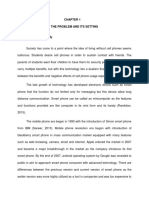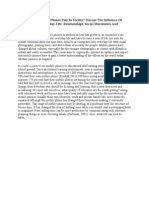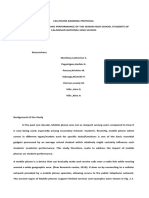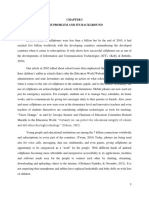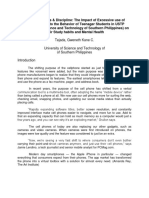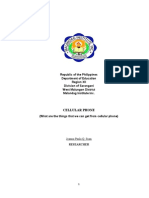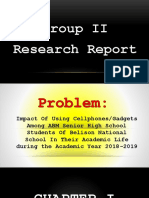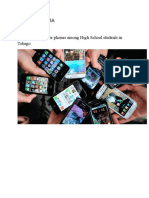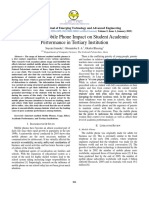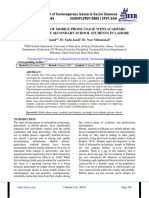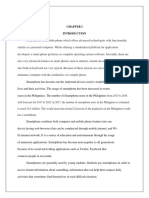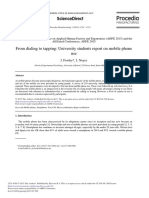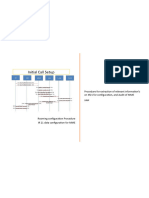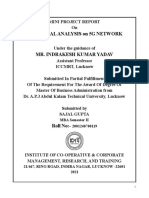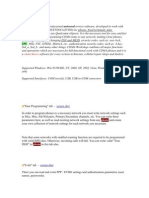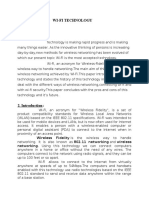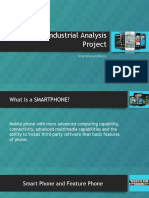0% found this document useful (0 votes)
85 views4 pagesThe Effect of Over Using Mobile Phones
The document provides background information on the rise of mobile phone use globally and among younger generations. It notes that while early mobile phones only supported calling and messaging, modern phones enable various other functions like internet access, apps, and photography. The document then states that the study seeks to address the impact of mobile phone use on student performance in secondary schools, as phones have become essential devices for most students but their unregulated use could be distracting. It will determine if mobile phone use affects private and public school students' academic performance differently. The document introduces some survey questions to collect data on students' mobile phone usage habits and each school's phone policies.
Uploaded by
Glei RafaelCopyright
© © All Rights Reserved
We take content rights seriously. If you suspect this is your content, claim it here.
Available Formats
Download as DOCX, PDF, TXT or read online on Scribd
0% found this document useful (0 votes)
85 views4 pagesThe Effect of Over Using Mobile Phones
The document provides background information on the rise of mobile phone use globally and among younger generations. It notes that while early mobile phones only supported calling and messaging, modern phones enable various other functions like internet access, apps, and photography. The document then states that the study seeks to address the impact of mobile phone use on student performance in secondary schools, as phones have become essential devices for most students but their unregulated use could be distracting. It will determine if mobile phone use affects private and public school students' academic performance differently. The document introduces some survey questions to collect data on students' mobile phone usage habits and each school's phone policies.
Uploaded by
Glei RafaelCopyright
© © All Rights Reserved
We take content rights seriously. If you suspect this is your content, claim it here.
Available Formats
Download as DOCX, PDF, TXT or read online on Scribd
/ 4





